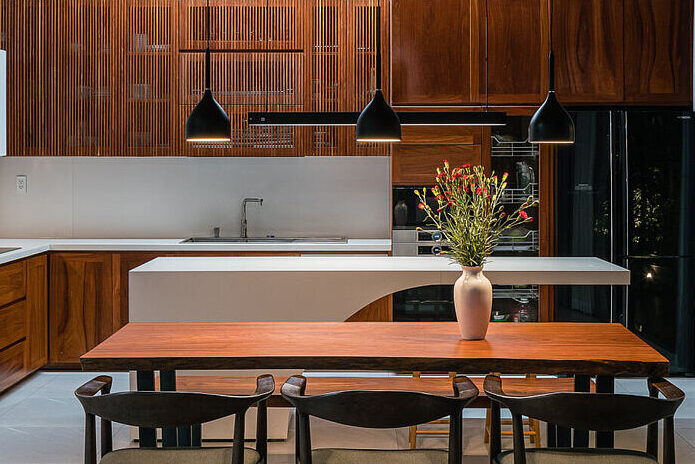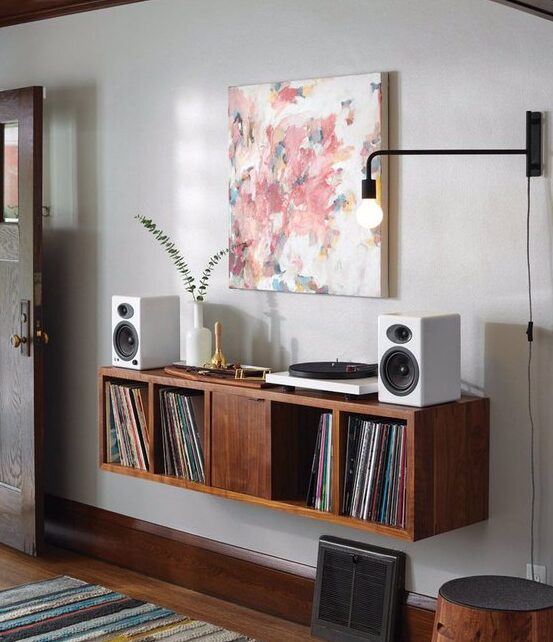Minimalism isn’t just a design trend; it’s a lifestyle choice that promotes simplicity, clarity, and mindfulness.
It emerged in the mid-20th century as a response to the ornate styles of the past and was largely influenced by movements such as Bauhaus whereby designers embraced simplicity, functionality, and clean lines.

At its core, minimalism is not just about stripping away the unnecessary, It’s about eliminating clutter, embracing clean lines, and creating spaces that are both beautiful and functional.
A minimalist environment encourages clear thinking and fosters a sense of calm, providing the perfect backdrop for work, relaxation, and contemplation

Over time Minimalism has evolved to become a dominant aesthetic drawing much of it’s inspiration from the Japanese Zen philosophy, The Scandinavian aesthetics, and modern architecture.
Ultimately, embracing minimalism in interior design creates environments that support well-being and foster inspiration within our surroundings offerings multitude benefits beyond aesthetics such as:
- Enhanced Clarity and Focus: By reducing visual clutter, minimalist spaces promote mental clarity and improve focus.
- Increased Productivity: A clutter-free environment encourages productivity and creativity by minimizing distractions.
- Improved Well-Being: Minimalist spaces promote a sense of calm and tranquility, reducing stress and anxiety.
- Sustainable Living: Minimalism encourages conscious consumption and waste reduction, contributing to a more sustainable lifestyle.

Designing with Minimalism.
Embracing minimalism doesn’t mean sacrificing style or comfort. Here’s how you can incorporate minimalist principles into your interior design:
1. Simplify Your Color Palette
Minimalist spaces typically feature neutral colors such as white, beige, gray, and black. These hues create a sense of openness and tranquility while allowing other design elements to stand out. Experiment with different shades and textures to add depth and interest to your space.

2. De-clutter Your Space
One of the key principles of minimalism is de-cluttering. Start by removing items that are unnecessary or no longer serve a purpose.
Keep surfaces clear and organized, and invest in storage solutions to hide away belongings when not in use. Remember, less is more.
3. Focus on Quality over Quantity
When selecting furniture and decor, prioritize quality over quantity. Choose pieces that are well-made, timeless, and functional.
Opt for clean lines and simple silhouettes that complement the minimalist aesthetic. Invest in durable materials such as wood, metal, and glass that will stand the test of time.

I don’t want to be interesting.
~ Ludwig Mies van der Rohe
I want to be good.
4. Let in Natural Light
Maximize natural light in your space to create a sense of openness and connection to the outdoors. Avoid heavy curtains or blinds that block sunlight, and instead opt for sheer fabrics or minimal window treatments. If natural light is limited, use strategically placed mirrors to reflect and amplify light throughout the room.

5. Embrace Negative Space
Negative space, also known as white space, is a fundamental element of minimalist design.
Allow areas of your space to remain open and uncluttered, creating a sense of balance and harmony.
Negative space can be just as impactful as the objects within a room, helping to define the overall aesthetic.
6. Curate Thoughtfully
When decorating a minimalist space, every item should have a purpose and meaning. Choose decor pieces that bring you joy and align with your personal style.
Incorporate plants, artwork, and meaningful objects that enhance the ambiance of your space without overwhelming it.

7. Prioritize Functionality
Above all, prioritize functionality in your minimalist design. Arrange furniture to optimize flow and usability, creating distinct zones for different activities. Consider the needs of the space and its occupants, and design accordingly to ensure maximum efficiency and comfort.

Minimalism can transform your living or working environment into a sanctuary of simplicity and serenity. By embracing It’s principles you can create a space that nurtures creativity, promotes well-being, and reflects your unique personality.
So take a cue from minimalism and let simplicity be your guide on the path to a more peaceful and harmonious living space!
Bonvolemo Interior Design
Proudly powered by WordPress


